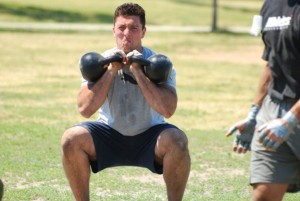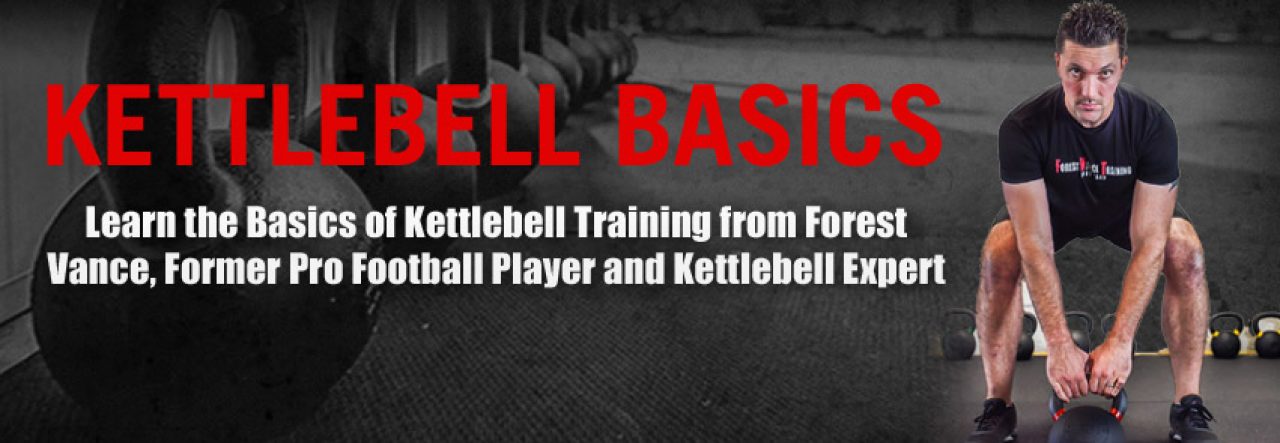
This is the story of the hardest leg workout ever. Please – DON”T try the sample workout I’ve provided unless you are 1) masochistic 2) like vomiting or 3) for some crazy reason just like really hard workouts.
Thanks
– Forest
It was the winter of 2003. I had just finished my senior year of college football and was getting ready for the draft in the spring. I had two college all-star games coming soon, prospects of the NFL combine, and pro scouts scheduled to visit my college campus in a couple of short months …
At this point in the game, a players stock can rise or fall a huge amount. Shaving a tenth or two off your 40 time, adding an inch or two to your vertical jump, adding a few reps to your 225 bench press rep test can mean moving up several spots – or in some rare cases, even rounds – in the draft. Which can amount to, well, a lot of dough 🙂
I was training with a couple of other players my agent represented at a facility in the San Francisco bay area … and it was unique experience to say the least. We’d get up in the morning, eat breakfast, and go train for a couple of hours. Then, mid-day, we’d get rest up, eat lunch, take a nap, get a massage, whatever … and then hit it again for about two more hours in the afternoon. Then we’d head back to the hotel, sleep for 9 or 10 hours, and repeat – six days a week. For six weeks straight.
I made, hands-down, the most amazing gains of my life during this time period. My vertical jump went up from 33 to 36 inches – and I weighed 308 at the time! I also hit 32 reps of 225 in a row on the bench press and got my 40 time below 4.9 …
The point of the story that you can apply to your own training is this, though – the way I was able to accomplish so much in such a short time period was due to three big factors:
1) total focus – I lived, ate and breathed training. May or may not be possible for you and your current life situation.
2) lots of recovery time – also, may or may not be possible for you and your current life situation.
3)incredibly hard training – without a doubt possible for you and your current life situation. And that’s what I hope you take away from this post …
My Hardest Leg Workout Ever
My trainer knew I had strong legs and was a big back squatter. But he also knew I typically lifted heavy … and that strength endurance wasn’t my strong point (at the time).
So, one day when he was feeling especially mean and I didn’t have any events/tests/etc. on the schedule for a couple of weeks, he put me through his 10×10 back squat workout. It went something like this:
- Pick a weight you can back squat 15 times MAX.
- Do 10 sets of 10 with it, resting exactly 60 seconds between sets.
- Also, make sure to use a 3-0-3 tempo during the sets – that is, take 3 seconds to lower the weight and 3 seconds to lift it. So 10 reps should take you a full 60 seconds to complete.
- Collapse, vomit, lose consciousness, etc.
Sounds so simple … but oh is it so hard 🙂 I had the deepest soreness I’ve ever experienced in my legs after this workout. I literally had to hold the hand rail to go to the bathroom for two or three days afterwards. I did it with a training partner – and he threw up not once, not twice, but three times – during the workout!
And that’s the story of my hardest leg workout ever. If you want to try something like it, this is a kettlebell squat workout I put together to smoke the living hell out of your legs … but, be warned. It is very hard 🙂
10×10 Double KB Front Squat Workout
- Pick two kettlebells you can front squat 15 times MAX.
- Do 10 sets of 10 with them, resting exactly 60 seconds between sets.
- Also, make sure to use a 3-0-3 tempo during the sets – that is, take 3 seconds to lower the weight and 3 seconds to lift it. So 10 reps should take you a full 60 seconds to complete.
- Collapse, vomit, lose consciousness, etc.
In summary, I hope you learned something from this post about the importance of training hard to reach your goals. You don’t have to throw up to make gains – but you do need to push yourself. Do this on a consistent basis, and you’re well on your way to reaching your ultimate kettlebell fitness goals!
‘Till next time –
Forest
PS – If you’re looking for LOTS more complete kettlebell workouts like this one, click this link: The Kettlebell Basics Weekly Workouts Program


